Adapting Yoga for Autoimmune Disease
Before rheumatoid arthritis appeared in my body, I loved yoga. It was a regular part of my life and benefitted both my physical and mental health. However, when I suddenly had a body filled with excruciating pain, the way I used to practice yoga was no longer an option for me. There was a time when even the gentlest stretches caused me to flare. So, I stopped practicing yoga altogether. After I recovered my health and my pain dropped to low levels, I was able to return to other activities I used to love – like hiking – but I still found yoga challenging because so many positions strained my joints. The body I had before wasn’t the same as the body I had now, even when I was in remission. I didn’t know how to create a new yoga practice that would work for my new body. I wish I had known about Jivana Heyman back then. He is our podcast guest today! Jivana has over 25 years of experience teaching yoga to people of diverse abilities. He is the founder and director of the Accessible Yoga Association and co-founder of the Accessible Yoga Training School. He’s also the author of two books: Accessible Yoga and Yoga Revolution. In this episode, we’re going to troubleshoot a wide variety of autoimmune symptoms and talk about how to develop a personalized yoga practice.
Listen to the Show
- Subscribe to my podcast through your favorite podcast app: iTunes, Stitcher, Google, TuneIn, Spotify, Amazon, etc.
- You can also listen to the episode right here through the player below, and if you subscribe to my newsletter you’ll get notified of future episodes.
Podcast: Play in new window | Download
Show Notes
- Intro (0:00)
- Welcoming a New Podcast Sponsor – DNRS (3:14)
- DNRS stands for the Dynamic Neural Retraining System, and it’s a therapy based on neuroplasticity. This simply means that our brains change and adapt to life experiences, sometimes in positive ways, but other times in negative ones.
- With chronic illness, symptoms can actually become wired into our brains, even when the triggers for those symptoms are removed. DNRS is a therapy done at home, that rewires the brain (and body) for health.
- What types of conditions have been helped? Almost any type of chronic inflammation. This includes fibromyalgia, chronic fatigue syndrome, chronic Lyme disease, Long COVID syndrome, multiple chemical sensitivity, multiple food sensitivities, irritable bowel syndrome, mold toxicity, chronic pain, and more.
- What’s common about many of these conditions is that they are often called “mysterious illnesses”, meaning there’s no clear cause or effective treatment. You may have multiple diagnoses on this list, and it’s not uncommon to feel hopeless.
- DNRS is a self-paced online course designed to break this cycle of inflammation and allow your body to recover. Get the course here.
- A Deeper Definition of Yoga (5:00)
- While many people in the West focus on the physical postures of yoga, it’s really a spiritual practice meant to help you uncover your true essence. The poses (asanas) are part of yoga, but not the deepest part.
- Meet Jivana (5:55)
- Jivana Heyman has over 25 years of experience teaching yoga to people of diverse abilities. He is the founder and director of the Accessible Yoga Association and co-founder of the Accessible Yoga Training School. He’s also the author of two books: Accessible Yoga and Yoga Revolution.
- His first yoga teacher was his grandmother – she was in her 60’s at the time and he watched her continue to practice as she aged. Then, as a young adult, he was an AIDS activist and wanted to teach yoga to people with HIV and AIDS, which needed to be accessible yoga. Later, he worked in Dean Ornish’s program teaching yoga to people with heart disease. So, he learned multiple ways that yoga could be adapted for anyone. The term “accessible yoga” was coined in 2007 when he created the Accessible Yoga Teacher Training Program specifically to help his students with disabilities become yoga teachers. The program is also open to any yoga teacher who wants to make their classes more accessible to all students.
- The Accessible Yoga Mindset (7:58)
- Know that your yoga practice doesn’t need to look like anyone else’s. That includes poses but also the internal experience of yoga. Yoga is an internal conversation, not an external one. In the West, with the focus on poses, yoga is often practiced as just another form of exercise. But that’s not what yoga truly is.
- Eileen mentioned in the introduction that she stopped practicing yoga due to joint pain, but she also started a meditation practice at that same time. Jivana pointed out that in his opinion, she didn’t stop practicing yoga. She stopped doing the poses, but actually took her practice deeper with meditation. Postures (asanas) aren’t the most important part of a yoga practice. Yoga also includes meditation, breathing practices, chanting, philosophy, service, devotional practices, and more.
- Yoga philosophy teaches that we all have some basic essential joy and peace inside – that’s who we are. Yoga is meant to help us get in touch with that essence. This is the opposite of how many of us approach our bodies and ourselves – looking at everything that’s wrong instead of tuning into what’s right. Accessible yoga can shift our thinking in a more self-loving direction. It doesn’t mean our struggles aren’t real, but it does mean there’s something beautiful within us no matter what, and we aren’t solely our struggles.
- And when it comes to the asanas (postures), it’s not about looking a certain way. Instead, accessible yoga looks at the intent behind the pose, and how you can explore that intention in a way that works for your body.
- When Does a Pose Become Yoga vs. Simply Being Exercise? (13:43)
- The primary goal of yoga is to create a relationship with your mind. If your intention is to focus your mind with the pose, then it’s yoga. You might focus on the breath, or your sensations, or an internal point in your body, or an external point on a wall. That’s a yoga pose. If you do the same pose, but your mind is wandering, or you’re watching TV or listening to a podcast, then it’s exercise not yoga.
- P.S. There’s nothing wrong with exercise. Exercise has many benefits. But if your goal is to practice yoga, it’s a mind-body experience.
- The Human Body in the Yoga Tradition (16:01)
- There are 5 layers of being called koshas: the physical body, the energy (breath) body, the mental (mind) body, the intuitive wisdom body, and the bliss body. And these layers exist throughout the body. You can work with any layer to impact the others. So by doing yoga postures, you’re using the physical body to influence the other layers. You can also work with the other layers (through practices like meditation or breathwork) to influence the physical body.
- The other thing to know is when it comes to the mind-body connection, in the yoga tradition your mind and body are already one. Instead, what is differentiated is that which always changing, and that which never changes. Our physical body and mind constantly change. Our essential self deep within remains unchanged. Getting in touch with that essence can help us navigate the challenges of a life with chronic illness, where our physical body feels completely different than it used to be.
- Physically Adapting a Yoga Pose (18:13)
- First, remember that yoga is mostly a practice of the mind. Are you focusing your mind and attention while doing this pose?
- Visualization is the most accessible form of yoga. If your body isn’t capable of doing a pose, you can still receive benefit by imagining yourself in that pose.
- If you would like to physically do a version of the pose, ask yourself, “What’s the purpose of this pose? Is it meant to work on balance? Strength? Flexibility? How does my body want or need to do this pose today? How can I adapt it to focus on that purpose in a way that’s personalized to my needs? What will benefit me most?” Don’t worry about what the pose looks like. Instead, focus on the internal experience of that pose.
- Chair yoga can be a wonderful way to begin.
- If you can afford it, yoga therapists work with people 1:1 to create a program that’s safe and beneficial for you.
- At the bottom of the show notes, there’s a list of resources to help you get started.
- Feeling Safe in Public Yoga Class Settings (22:16)
- One of the most important aspects of accessible yoga is the idea of agency: a feeling of authority and control over your own body. Instead of a top-down approach to teaching yoga where the teacher knows everything and the student knows nothing, Jivana believes in a model where the student is empowered. No matter how experienced a yoga teacher is, they don’t know what’s best for you. They’re not inside your body, experiencing your life. And people who experience pain, disability, or chronic illness, are usually very in touch with their internal world and know what they need at a given time. So, accessible yoga empowers students to personalize postures and practice accordingly.
- The best yoga teachers offer a wide variety of variations for poses and encourage students to explore the pose that’s most beneficial to their body. They also give students permission to skip a pose during a class if it doesn’t feel safe for them.
- As a student, you may be more confident in a public class setting after experimenting with accessible yoga at home first. Then, if you try a public class, speak to the teacher in advance and explain your situation, to make sure you have the support you need.
- Seek teachers with experience rather than brand new teachers, and if a teacher is trained in accessible yoga, that’s ideal.
- What Is an Advanced Yoga Practice? (26:41 & 33:33)
- It’s more advanced when a student is tuned into their internal experience enough to know when to stop doing a pose, rather than pushing themselves to injury.
- The external pose is not a reflection of an advanced practice. It’s not about looking impressive on the outside. The advanced student is the one who knows themself. Jivana is most impressed by students who personalize their practice and know when to stop.
- The trend of “perfect” looking yoga photos on social media and magazine covers is a dangerous one. These are the photos of beautiful people doing extreme poses in gorgeous nature locations. They don’t reflect a true yoga practice, because they are focusing on the external instead of the internal experience, and they set up a competitive and exclusive atmosphere around yoga. Eileen saw a college student trying to take one of those photos at a local mountain overlook. The young woman couldn’t hold the pose more than a second, and it took many tries before her friend captured that in a photograph she could share on social media. Even among the people who can do these poses for longer, it’s not always healthy. Jill Miller, a famous teacher and founder of Yoga Tune-Up, publicly disclosed she needed a total hip replacement at age 45, due to over-exerting her body with extreme yoga poses.
- Adapting Yoga Poses Around Joint Pain (28:18)
- There are many autoimmune diseases that attack the joints directly, including all of the autoimmune arthritis conditions. But other autoimmune diseases can cause joint inflammation as well, and many traditional yoga postures put a lot of pressure on joints, whether the goal is strength, flexibility, or even relaxation.
- Chair yoga is a wonderful way to begin an accessible yoga practice. The chair offers more support and safety, and you’re naturally aware that you’ll be doing the pose differently. It allows you to create your own version of a pose, because you’re not copying what you’ve seen others do.
- Sometimes we don’t know how a pose will impact our body until later. So, start slow, doing much less than you think you should. Small movements, done with awareness, can offer profound benefits. More isn’t necessarily better. Yoga is about subtlety. Then monitor how you feel that night and the next day. Did you receive benefits, or experience negative symptoms? Listen to your body’s feedback.
- If you have a teacher or yoga therapist, share that feedback with them.
- Resources:
- Thank You to Our Podcast Sponsor – ShopAIP (37:57)
- Today, I’m highlighting their selection of AIP spice blends. Many spices are off-the-table during the elimination phase of the Paleo Autoimmune Protocol, but that doesn’t mean you can’t enjoy flavorful food! Many herbs and spices are still AIP-friendly, and ShopAIP sells some wonderful blends! Primal Palate has a breakfast blend, a super gyro blend, and a garlic & herb. KC Naturals has a seasoned sea salt, an all-purpose meat and veggie seasoning, and a BBQ rub. Paleo Powder is another all-purpose herb blend. And Herbamare is the original seasoned salt that also happens to be AIP-friendly.
- ShopAIP is an online store dedicated to the Paleo Autoimmune Protocol. With hundreds of items for the elimination phase of the AIP, and products labeled by reintroduction category as well. You can find protein bars, sauces and condiments, AIP-friendly spices, cooking and baking ingredients, waffle and pancake mix, delicious snacks, and more.
- If you’re a first-time customer, use the code PHOENIX for 10% off your order. Purchase here.
- Adapting Yoga Poses Around Flexibility Challenges (39:14)
- Many autoimmune diseases impact flexibility. Scleroderma tightens the skin in a way that can limit range of motion. Some autoimmune diseases tighten connective tissue, while others limit flexibility in other ways. Then, on the opposite end of the spectrum, diseases like Ehlers-Danlos syndrome involve an over-flexibility that can leave you vulnerable to injury. Both types of flexibility challenges require an adapted yoga practice.
- For any health condition, Chair yoga is a great way to begin. Remember, it doesn’t matter what your pose “looks like”. Focus on the goal of the pose and the internal experience. The information we shared above applies for flexibility challenges as well.
- Also, the internet is a wonderful place to find resources personalized for specific health conditions. Google your diagnosis + yoga, and see if there are groups or tutorials online.
- Resources:
- Adapting Yoga Poses Around Strength and Balance Challenges (41:40)
- Fatigue is common to all autoimmune conditions. And neurological autoimmune conditions like multiple sclerosis and myasthenia gravis can interfere with communication between the nerves and muscles, causing weakness, balance issues, and unpredictability of function.
- Jivana worked for the MS Society in Northern California, teaching yoga to people with MS. Like all accessible yoga, it’s personalized to the individual.
- Props can be very helpful. If you can stand comfortably and are working on balance, you can lean against a wall, or put one hand on a chair for support. If you use a cane or a wheelchair, you can incorporate that into your practice, or explore an adapted practice without using assistive devices. Exploration is key. Try variations to discover what you like best at a given time.
- Chair yoga doesn’t focus on strength naturally, but you can bring strengthening to chair yoga as long as you’re intentional. Isometric holds (static movements) can be accessed (or added to) a variety of chair poses.
- Resources:
- Book: Yoga and Multiple Sclerosis.
- Videos: Yoga for MS.
- Article: Making Balance Poses Accessible.
- Restorative Yoga (47:23)
- This is a practice where you hold propped positions for long periods of time, striving to quiet your body and mind. It’s a more restful way to practice, but it’s also very nuanced and deep.
- For people new to yoga, this may look easy, but it can actually be quite challenging. Sometimes stillness feels overwhelming. Jivana often finds a moving yoga practice an easier way to begin.
- However, definitely explore it. You might love it, now or in the future.
- Resources:
- Bed Yoga (49:02)
- Some listeners might be in the middle of an autoimmune flare that has them in bed right now.
- Bed yoga isn’t the same as restorative yoga. Bed yoga is usually a moving practice adapted for bed.
- Lying on your back or side are the safest positions for bed yoga. Then explore moving your body in concert with your breath, and this will automatically engage your mind. You can work on strength or flexibility. You can use props if you like. Tune into what your body wants today.
- Resources:
- Excerpt from Jivana’s Book: Bed Sun Salutations.
- Online Class: Yoga You Can Do In Bed.
- The Emotional Experience of Connecting with a Chronically Ill Body (50:56)
- With chronic illness, we often feel disconnected from our bodies or develop an antagonistic relationship with our bodies. Accessible yoga is a way to reconnect in a loving way and rediscover pleasure in our bodies again.
- At the same time, other emotions are likely to rise to the surface, like grief, anger, fear, and even shame. When our body doesn’t perform “perfectly”, we sometimes feel deeply flawed and at fault, even when that’s an unfair assessment. Yoga at its essence is a practice of self-awareness, so emotions you’ve been repressing might come to the surface. Be gentle with yourself.
- Yoga movements and breathing can help release emotions that arise, rather than getting stuck in an emotion. That can be a beautiful benefit. At the same time, yoga isn’t a cure-all, and sometimes we need emotional and mental health support beyond yoga. This might include processing our feelings in a journal or seeking counseling.
- One gift of chronic illness is that it allows us to work with these challenging feelings earlier in our lives, and gain some skill in doing so. We’re all going to age, and eventually everyone faces death. Part of a yoga practice is that awareness. And at the same time, yoga also helps us get in touch with the part of us that is unchanging – our essence that is always there, no matter what is happening in our physical body.
- Resource Podcasts:
- Yoga: Compassion for Yourself and Others (56:42)
- Jivana’s second book is called Yoga Revolution: Building a Practice of Courage and Compassion.
- When we create a yoga practice that fills us up in some way, we have more to give others. When we increase self-compassion, it’s easier to be kind and compassionate with others. Yoga teachings offer a message the world could use right now. So often, we struggle with the outer world that we can’t control. But if we start with ourselves and try to stop our own inner battles, creating more peace between our heart and mind (not perfect peace, but more peace), how might that change how we treat others? Would we cause less harm? Would we offer more kindness?
- Accessible Yoga Resources by Jivana
- Free Video: Accessible Yoga Class.
- Book: Accessible Yoga.
- Online Class: Chair Yoga 101.
- Facebook Group: Accessible Yoga Community.
- Association: Accessible Yoga Association.
- Teacher Training: Accessible Yoga Teacher Training Program.
- More classes and articles at Yoga International.
- Outro (58:23)
- You can connect with Jivana Heyman through his website. He also co-hosts the Accessible Yoga Podcast.
- Eileen (your podcast host) is the author of multiple books, written to help people thrive with autoimmune disease. Learn more on the Books Page.
- If you like this podcast, follow or subscribe through your favorite podcast app. You can also subscribe to Eileen’s biweekly newsletter.
- Check out the entire archive of podcast episodes.
You May Also Be Interested In
Spreading the Word
If you like the podcast, please leave a positive review in iTunes. It would mean the world to me, and also helps others find the podcast. Here are some quick instructions using your iPhone:
- If you are already subscribed to my podcast: (1) Click the purple podcast icon. (2) At the bottom of the screen, click Library. (3) At the top of the screen, click Shows. (4) Click the Phoenix Helix podcast image. (5) Scroll down the page, and you’ll see Ratings and Reviews. Scroll down a little bit more and click on Write a Review. This will bring up the review screen. Tap 5 stars (if you love the podcast), and then click in the title box, and it will bring up the keyboard. Enter a title and short review. (6) Click Send in the upper right corner. (7) Thank you! Positive reviews give the podcast a higher search ranking in iTunes, helping people find it and letting them know it’s a quality podcast and worth their time to listen.
- If you haven’t subscribed to my podcast: (1) Click the purple podcast icon. (2) In the lower right corner, click the magnifying class. (3) Type Phoenix Helix in the search box. (4) Click the podcast cover in the Show list. (5) If you’d like to subscribe, click the + sign at the top of the screen. (6) To write a review, scroll down the page, and you’ll see Ratings and Reviews. Scroll down a little bit more and click on Write a Review. This will bring up the review screen. Tap 5 stars (if you love the podcast), and then click in the title box, and it will bring up the keyboard. Enter a title and short review. (7) Click Send in the upper right corner. (8) Thank you! Positive reviews give the podcast a higher search ranking in iTunes, helping people find it and letting them know it’s a quality podcast and worth their time to listen.

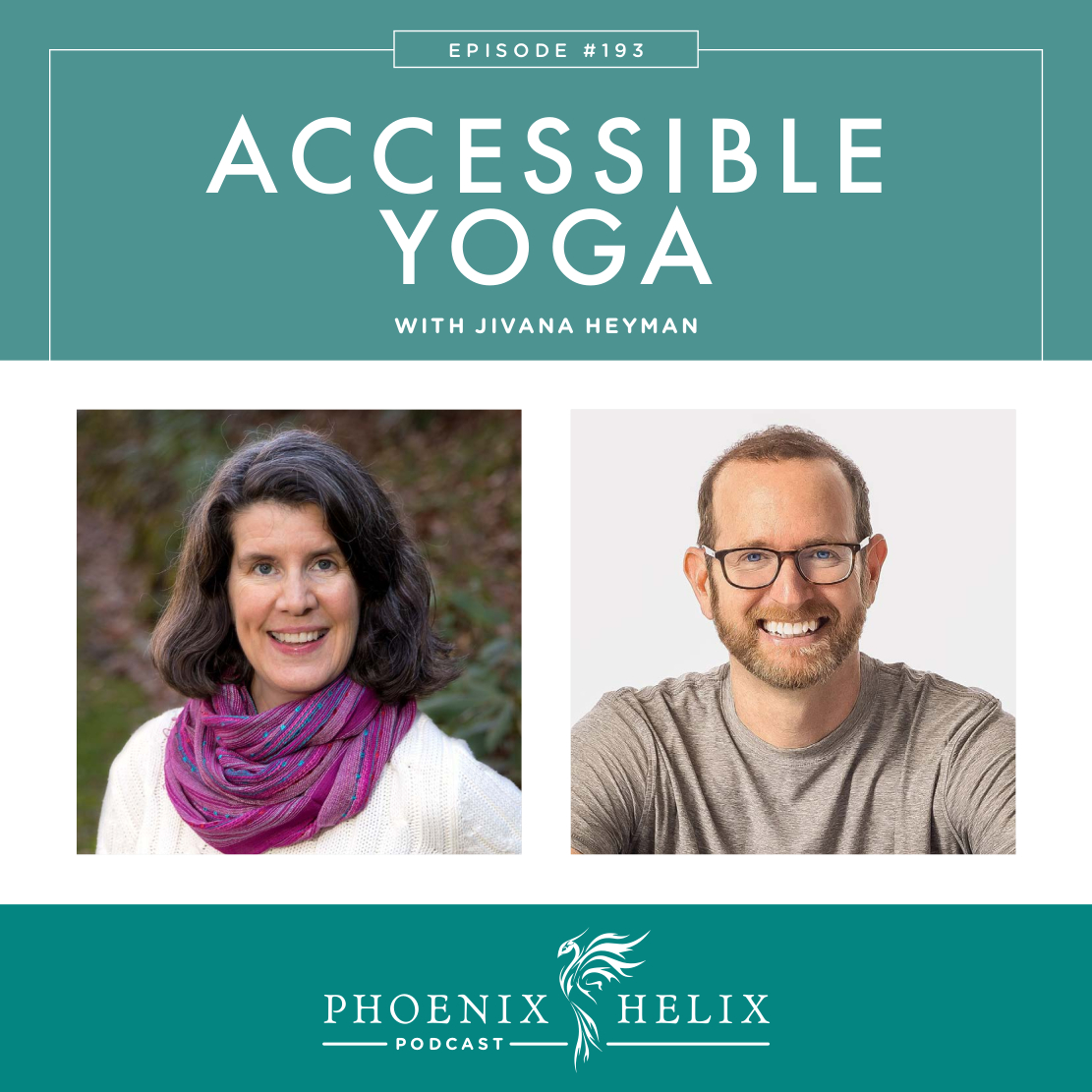

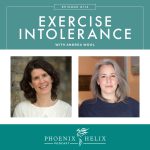
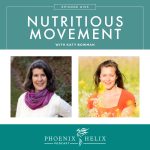
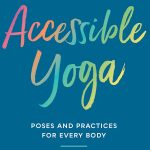
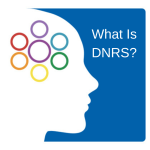


I was happy when I found gentle Yin Yoga worked well for me with RA. I had never heard of it and just gave up for a few years when pain became unbearable. I like doing it with YouTube so I can just hold positions at my pace. It’s worth a try!
I’m so glad you found something that works well for you, Kathleen. Yin yoga does look like a beautiful philosophy.